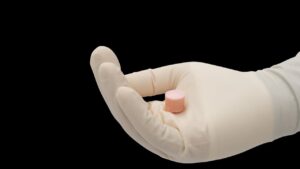Understanding Bilateral Trochlear Osteochondral Allograft Transplantation: A Revolutionary Solution for Complex Cartilage Injuries
Bilateral Trochlear Osteochondral Allograft Transplantation is an advanced orthopedic surgical procedure designed to restore damaged cartilage in both femoral trochlear grooves of the knee. This highly specialized technique is typically reserved for patients with extensive cartilage loss, recurrent patellofemoral instability, or failed prior interventions.
In the video above, we take you into the operating room to observe this complex procedure being performed, showcasing the precision and expertise required to ensure a successful outcome.
What Is the Trochlea and Why Does It Matter?
The trochlea is the groove at the end of the femur (thigh bone) where the patella (kneecap) glides during knee movement. Damage to the trochlear cartilage can cause:
- Chronic pain
- Instability
- Locking or catching of the knee
- Decreased mobility and function
When both knees are affected, the limitations can severely impact quality of life — making bilateral intervention not only necessary but life-changing.
What Is an Osteochondral Allograft?
An osteochondral allograft involves transplanting a plug of donor cartilage and bone into a damaged area. It is different from other cartilage repair options like microfracture or autologous chondrocyte implantation in that:
- It provides both bone and cartilage
- It comes from a donor, not the patient
- It can restore anatomy and biomechanics more completely
The Bilateral Procedure: What Makes It So Complex?
Performing Bilateral Trochlear Osteochondral Allograft Transplantation means doing this on both knees, often during the same surgical session. Key challenges include:
- Precise sizing and shaping of the donor grafts
- Ensuring perfect alignment of the joint surfaces
- Managing post-operative rehab across both limbs
Despite the difficulty, patients with bilateral degeneration often see dramatic improvements in stability, pain relief, and activity level after surgery.
Who Is This For?
This procedure is typically recommended for:
- Young, active patients with irreparable trochlear cartilage damage
- Individuals who have failed conservative treatments or previous surgeries
- Patients experiencing bilateral symptoms limiting daily function
A thorough evaluation including MRI, X-rays, and biomechanical assessment is essential before determining candidacy.
Bilateral Trochlear Osteochondral Allograft Transplantation is a testament to the evolution of orthopedic surgery — offering hope to patients once considered untreatable. By addressing both knees with anatomically matched donor tissue, it aims to restore natural movement, reduce pain, and allow for a return to an active lifestyle.
Watch the video above for a behind-the-scenes look at the surgical procedure, and speak with your orthopedic surgeon to learn if this cutting-edge technique is right for you.
